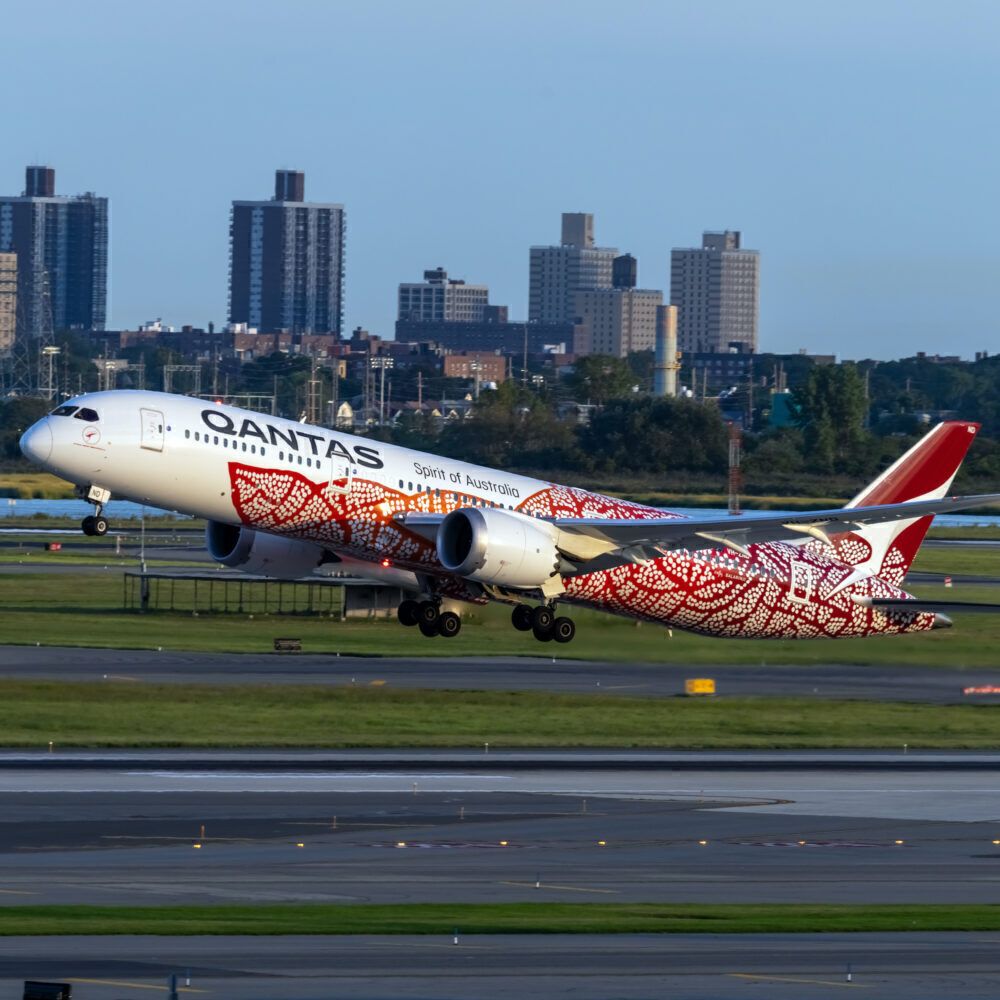Qantas
- IATA/ICAO Code
- QF/QFA
- Airline Type
- Full Service Carrier
- Hub(s)
- Brisbane Airport, Melbourne Airport, Sydney Kingsford Smith Airport
- Year Founded
- 1920
- Alliance
- oneworld
- CEO
- Alan Joyce
- Country
- Australia
Passengers taking their carry-on luggage with them during an emergency evacuation, including some passengers taking carry-on with them while they exited the plane via inflatable slides, slowed the evacuation of a Qantas Airbus A330-200 in December 2019, according to a report just released by the Australian Transport Safety Bureau (ATSB).
An unusual evacuation of a Qantas Airbus A330-200
The report’s release on Tuesday came after an investigation into the December 15, 2019, incident when the Perth (PER) bound Airbus jet returned to Sydney (SYD) shortly after takeoff after haze and fumes from a hydraulic leak entered the cabin. Onboard the flight were 232 passengers and crew.
By the time the plane made it back to Sydney, passengers and crew were having problems with the fumes, including eye and throat irritation. Back at the gate, the Captain decided on an emergency evacuation while, unusually, the jetbridge was also deployed. The ATSB says 129 passengers left the plane via the jetbridge while the remaining 93 passengers used one of the three slides deployed.
An image retrieved from CCTV footage of passengers evacuating the Qantas Airbus. Source: ATSB
Problems with passengers taking carry-on with them during the evacuation
The problem was that many passengers ignored the standard instruction to leave their belongings behind when evacuating a plane. Passengers taking their carry-on with them slowed the evacuation. At the same time, the ATSB investigation found Qantas hadn’t properly instructed passengers on using the slides in the pre-departure safety briefing.
“The ATSB found limitations and inconsistencies in how Qantas’s safety video and briefing card described emergency slide use and what to do with cabin baggage in an emergency,” said ATSB Chief Commissioner Angus Mitchell.
“The pre-flight video showed a passenger sitting down and placing their bag next to them, just prior to sliding. The management of passengers in an emergency situation is the last line of defence to avoid injuries and fatalities, so it is important passengers are well informed through the provision of sufficient and accurate communication about what they may be required to do.”
Six passengers were injured because they incorrectly used the emergency evacuation slides. One passenger suffered tendon ruptures in both knees, while others sustained minor injuries, including knee sprains, friction burns, and elbow cuts and abrasions.
Fumes and haze in the cabin from a hydraulic leak forced the pilots to return the Airbus A330-200 to Sydney. Photo: Qantas
The ATSB wants more clarity from Qantas in its pre-departure safety briefings
The ATSB found primary commands practiced by Qantas cabin crew to instruct passengers in an evacuation did not include phrases such as ‘leave everything behind’ and ‘jump and slide’. The investigation viewed CCTV footage that showed 40 passengers exited with carry-on, and some took the time to collect their belongings after the Captain issued the evacuation order.
“Some passengers also brought cabin baggage to the top of the emergency slides, and while some complied with cabin crew and left them behind, others were shown on CCTV with their luggage in hand, after using a slide,” said Mr Mitchell. “Passengers should always leave their belongings behind during an evacuation.”
Despite acknowledging the complexity of this particular briefing, the ATSB report chides Qantas for the limitations of its pre-departure safety briefing and the way the aircraft crew managed the evacuation process.
“Crew members must remain prepared to react to an emergency at any time, until everyone has disembarked the aircraft,” said Mr Mitchell.
In response to the incident and the ATSB investigation, Qantas has amended its passenger safety briefing video and is looking to incorporate ‘leave everything behind’ into its primary evacuation commands.
[ad_2]
Source link


.png)


